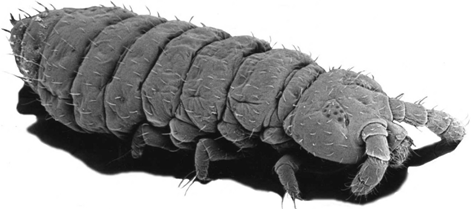
The Sinclair Lab at UWO

 |
Insect Low
Temperature Biology The Sinclair Lab at UWO |
 |
| Heath MacMillan | |||
| Home People Research Publications Vacancies Links Contact Us Biology Home |
About Me I completed my undergraduate degree in Biology with an honours specialization in animal physiology at the University of Western Ontario in 2008. During my time as an undergraduate, I investigated potential mechanisms for the rapid cold hardening response in Drosophila melanogaster. After a brief summer break to travel the world I returned to the Sinclair lab to pursue a masters degree, which quickly turned into a PhD co-supervised by Brent Sinclair and Jim Staples. I will complete my PhD in August of 2013. Research Interests I am interested in the physiological means by which abiotic stressors cause injury to ectotherms, as well as the mechanisms of evolutionary and phenotypic plasticity in stress tolerance. Principally, my research is directed toward obtaining a clear understanding of what limits insect function at low temperatures and by what means differences in thermal limits in individuals (through acclimation), and between species (through adaptation to local climates), arise. Chill-coma When exposed to unfavorably low temperatures, insects enter a narcosis-like state that has been termed chill-coma. Chill-coma is characterized by a complete loss of muscular function, recovery from which can take place within seconds of return to favorable ambient temperatures. Chill-coma was first formally described over a century ago, and has since become a common measure of ectotherm cold tolerance. Yet despite its regular use in characterizing the cold tolerance of economically and environmentally important insects worldwide, the physiological mechanisms that cause chill-coma and permit recovery are only now becoming clear.
When
cooled to temperatures at which chill-coma
takes place, nerve and muscle cell resting potentials depolarize
(Goller &
Esch, 1990; Xu & Robertson, 1994). With continued exposure
to low
temperatures (time spent in chill-coma), ion gradients further
dissipate in a
manner that correlates with the onset of permanent injury and
death (Kostal et
al., 2006). The loss of muscle resting potential and subsequent
progression of
injury are likely driven by a large displacement on hemolymph Na+
and water into the gut, which elevates K+
concentration in the
remaining hemolymph that surrounds the muscle tissue (MacMillan
& Sinclair 2011, JIP).
This loss of ion
balance in insects does not appear to be driven by a lack of
available energy
though temperature effects on oxygen availability (as in marine
animals; see
Pörtner, 2010), but is more likely to be driven by the direct
effects of
temperature on enzymes responsible for the maintenance of ion
balance on the
membrane environment in which they sit (MacMillan et al. 2012, JEB). The ability for insects to recover from chill-coma appears dependent on their ability to remedy the water and ion imbalances that manifest in the cold. While the recovery of ion concentrations in the hemolymph that permit movement can be accomplished quite quickly, getting water back where it belongs is a lengthy, metabolically expensive endeavor (MacMillan et al., 2012; PNAS). Cold Tolerance Plasticity Cold tolerance varies widely both among and within insect species. My current work is directed toward linking variation in physiological mechanisms of ion and water balance to whole organism thermal sensitivity using Drosophila as a model. Currently, I am utilizing several lab-reared Drosophila species that differ widely in cold tolerance to investigate how variation in cold tolerance may be tied to variation in the ability to maintain ion balance in the cold. |
 |
|